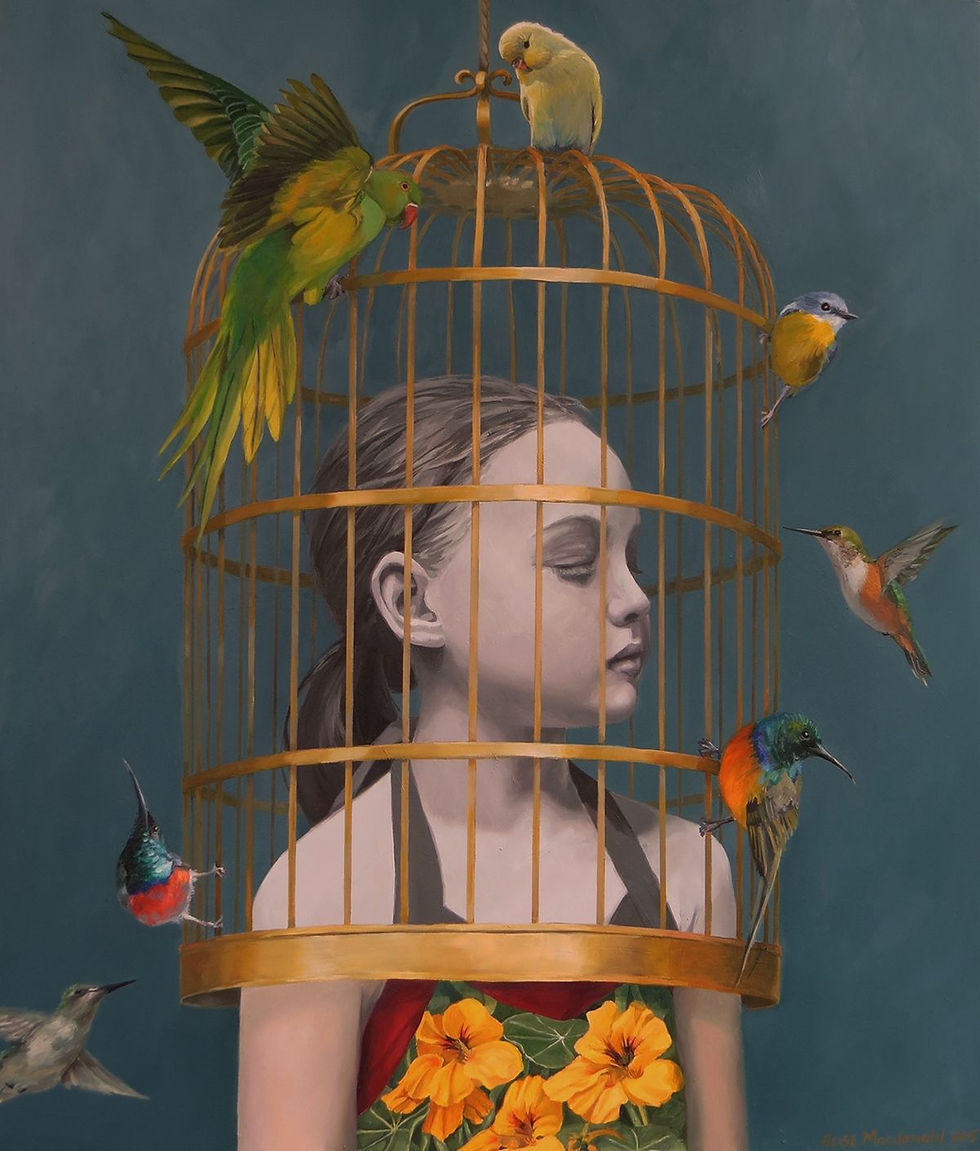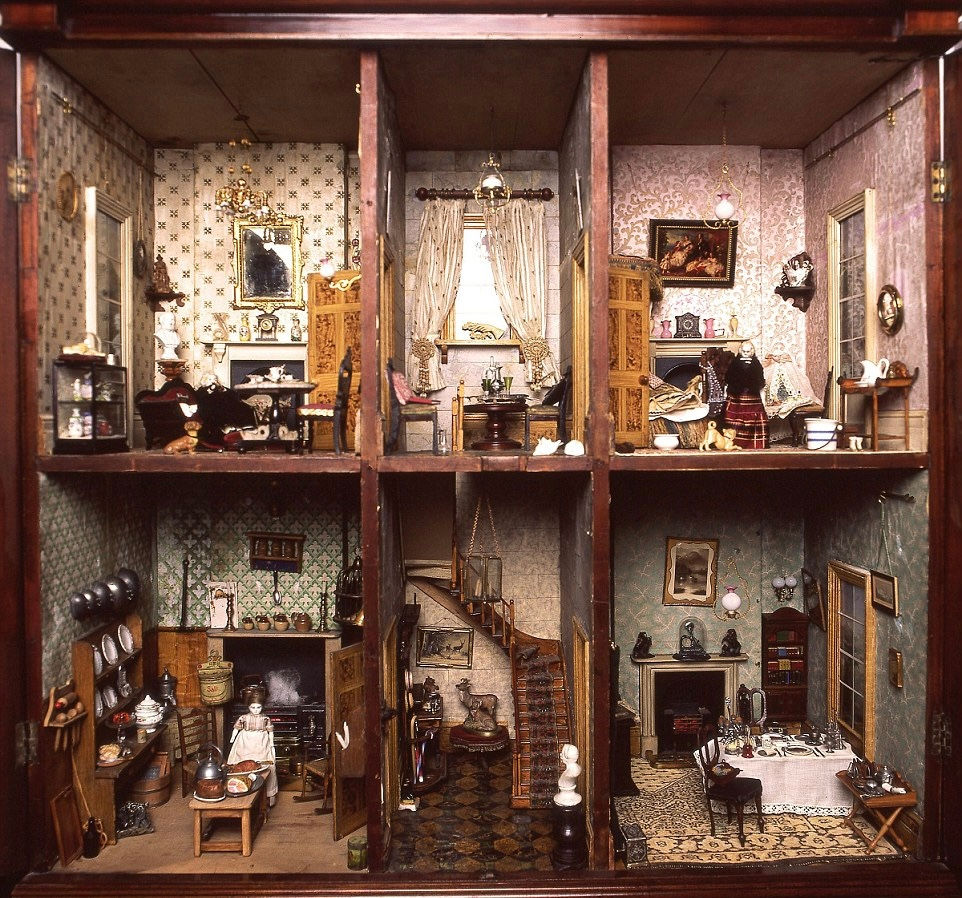Escaping Home: A Feminist Study of Ibsen’s A Doll’s House

Throughout the centuries, literature has been the catalyst of social, ideological, and moral changes as words have shaken societies to their core. Thus, pieces of writing, whether it be novels, articles, or plays, have altered the course of history, affecting people’s minds, beliefs, and lifestyles. Ibsen’s A Doll’s House, written in 1879, was arguably one of the most controversial plays of the 19th century, and consequently resulted in ongoing debates and discussions, which mainly revolve around gender roles, social norms, and sexism. At the beginning of the play, the protagonist, Nora, seems to be an obedient and submissive housewife. However, she ends up rebelling against the social rules of that period and slamming the door whose buzzing still reverberates nowadays.
The play opens with the act I and the audience can recognize the familiar setting of a decently furnished living room. Although numerous locations are mentioned throughout the play, the entirety of the actions takes place within that one space. At first glance, the Helmers appear to be a happy couple, a normal family living in a traditional household. However, secrets are quickly revealed that move the plot forward and elevate the suspense. Carbone (2020) argues that:
“The set-up of A Doll’s House is in line with Ibsen’s use of the 'retrospective technique', according to which the past events leading to the climax are progressively unveiled through the words and acts of the characters in the course of the play” (p. 106).
The audience soon discovers that Nora forged her father’s signature to get a loan from Krogstad to treat her ill husband. A woman taking out a loan might not seem like a significant event for the modern-day reader, but for the 19th-century audience, there is a remarkable problem. At the time, women were not allowed to take out loans as the economic world was strictly a male-dominated field. Thus, Krogstad tries to blackmail Nora into getting him his job back at the bank, where her husband Torvald is in charge. At first, Nora worries about her husband’s reaction but eventually ends up leaving him and her three children behind.

Nora undergoes an obvious transformation between the first and last act, as she goes from an innocent wife, scared of her husband’s temper, to a powerful and independent woman who prioritizes herself. Nora’s character development has confused many critics, and some even went as far as stripping her of her femininity and declaring her a “man” for the way she acts at the end of the play. According to Rekdal & Myskja (2002), “Nora is either not a moral woman, or she is not a woman at all, since she speaks like a man and appears to be Ibsen's mouthpiece for feminist opinion” (p. 150). As Nora goes against every “feminine” aspect of the 19th century, she gains a masculine attribute instead, as an attempt to justify her actions to the close-minded audience of the time. It felt absurd to witness a woman, but most importantly a wife, leaving her husband and children instead of enduring the struggles that normally accompany this status.
Nora’s decision, although unpredictable and widely unacceptable at the time, has numerous reasons behind it. Surprisingly, it wasn’t Torvald’s initial reaction that led her to leave the house, but rather his second, calmer and more understanding one. At first, Torvald is enraged and angry at Nora, which pushes her to consider suicide as her only possible solution. Although one might blame Nora for leaving her children, it is important to look closely at the reasons and justifications behind her actions. Moi (2006) defends her saying that “She makes a point of saying that she chooses to leave her children, precisely because she is not yet enough of an independent individual to educate them” (p.278). Nora, thus, finally realizes that she had been living through her husband, and has always had a filtered view of her own society. Hence, she decides to leave to learn how to become an individual that gets to experience life first-handedly. While it is easy to misjudge Nora as a careless and selfish mother, but she is actually acting out of affection, care, and love for her children.

Additionally, Torvald’s final reaction only comes after Krogstad returns the original contract which alleviates Torvald’s worry that people would find out about this scandal. Thus, Torvald only ever cared about his reputation as the man of the household, and his only concern was social rather than personal. This makes Nora aware of her lack of love towards her husband who doesn’t seem to care for her as much as she believed he did. Moi (2006) claims that “A Doll’s House insists that to love a woman, it is necessary to see her as the individual she is, not just as wife and mother, or as daughter and wife” (p. 278). This highlights Nora’s feminist aspect as she listens to her own feelings and emotions. She craves and demands to love and be loved in return, just like any human being. She speaks up about her sensual, emotional, and sexual needs, which greatly shocks the first audience of the play. Some even argued for Ibsen’s support of the women’s rights movement; however, Quigley (1984) debates that “in A Doll’s House, Ibsen was neither supporting nor opposing the position of the contemporary women's rights movement, but exploring the long-term social issues implicit in the very existence of such a movement” (p. 601). Furthermore, Nora leaves to find love, but mostly to find herself as a social person, as a woman, and as a sensual being. Moi (2006) argues that “Nora, then, demands nothing short of a revolutionary reconsideration of the very meaning of love” (p. 278). The innovative protagonist differentiates between true love and loving the idea of love; she says to her husband in the last act:
“NORA (shakes her head). You never loved me. You just thought it was fun to be in love with me” (Ibsen, p. 357).

Therefore, Nora breaks the stereotypical character of the weak, silent, and submissive woman, and instead, confronts her husband about the superficiality of their marriage. She reveals the consequences of a socially-pressured matrimonial, based on appearances and an imbalance of power. Langas (2005) states that:
“Nora’s decision to break with the life she has been living thus far is derived from the realization that she is trapped in a gendered system of subordination and in opposition to the norms that govern her life as a woman” (p. 165).
Thus, Nora renounces the role of the doll of the house, the toy that can be and has been manipulated by the patriarchy; she is no longer a skylark trapped within the domestic sphere but becomes a free woman, shutting the cage door behind her. Finally, Ibsen’s A Doll’s House is an early critique of the 19th-century gender roles that objectified women and assigned them domestic chores and duties in an attempt to tame them. Hence, the play is a destruction of the social norms that dictate the responsibilities of people based on their gender. Ibsen’s play empowers women and encourages them to take charge of their own lives, to discover themselves as free and independent individuals. But most importantly, the play emphasizes the value of true love and each person’s right to love and feel loved in return. In Ibsen’s avant-garde masterpiece, the woman is humanized and given full control of her life again.
References
Carbone, E. (2020). Nora: The Life and Afterlife of Henrik Ibsen's A Doll’s House. Introduction to Nordic Cultures, 102-116.
Ibsen, Henrik. Et dukkehjem [A Doll’s House]. Ibsen, Samlede Verker. Vol. 8. 269–364.
Langås, U. (2005). What Did Nora Do? Thinking Gender with A Doll's House. Ibsen Studies, 5(2), 148-171.
Moi, T. (2006). ‘‘First and Foremost a Human Being’’: Idealism, Theatre, and Gender in A Doll’s House. Modern Drama, 49(3), 256-284.
Quigley, A. (1984). A Doll's House revisited. Modern drama, 27(4), 584-603.
Rekdal, A. M., & Myskja, K. (2002). The Female Jouissance: An Analysis of Ibsen's" Et dukkehjem". Scandinavian Studies, 74(2), 149-180.
Picture References:
Figure 3: Elise Macdonald (2015), Girl in a Gilded Cage [oil painting], Behance.
Figure 4: James Dunn (2015), 1850's Doll House [Photograph], Pinterest




Comments